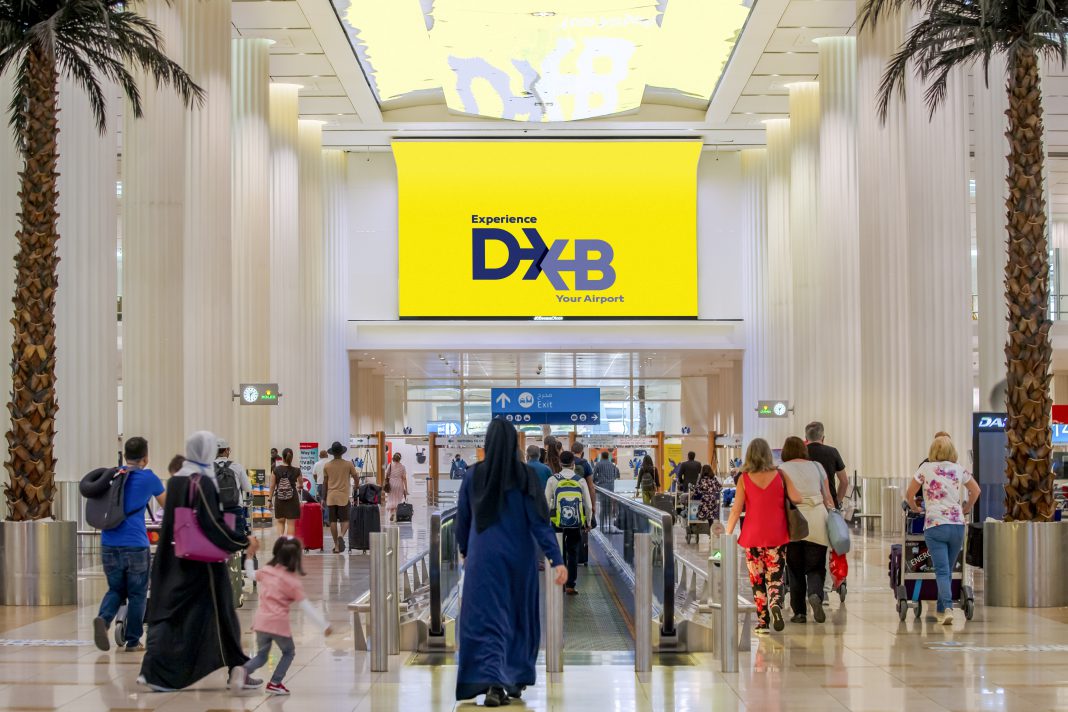Dubai International (DXB) continues to be the world’s busiest airport by international passenger numbers for the eighth consecutive year after clocking 29.1 million in annual traffic in 2021. DXB’s annual traffic exceeded forecasts for the year by more than half a million passengers, on the back of a strong last quarter.
Paul Griffiths, CEO of Dubai Airports, described an eventful year which, despite the uncertainties of the global pandemic, contained many milestones that demonstrate several bold steps taken by Dubai and its aviation sector to lead the recovery of global air travel, including the successful hosting of the Dubai Airshow 2021, the world’s first major airshow since the start of the pandemic, the return of DXB to 100 per cent operational capacity with the reopening of Terminal 1-Concourse D and Concourse A, and the opening of the world’s largest in-house airport laboratory for fast-track processing Covid-19 PCR test samples for Dubai’s visitors. The airport also welcomed a record number of new airlines connecting Dubai to new destinations and joined the rest of the city in creating a warm welcome for millions of visitors to Expo 2020 Dubai.
Describing DXB’s performance in 2021 as nothing short of impressive, Griffiths said, “Despite unprecedented turmoil affecting millions of people all over the world, we overcame many serious obstacles to the operation of the world’s largest international hub and provided smooth, comfortable and safe travel for millions of people travelling through DXB. This incredible performance by all of our staff and stakeholders was achieved in the face of abruptly changing travel regulations and concerns about new waves of infection. Despite these serious challenges to our ongoing success, we managed to exceed our own forecasts and continue to retain our crown as the world’s busiest international airport.”
“With the eagerly anticipated reopening of key markets such as Australasia and the further easing of travel regulations around the world, the outlook for 2022 is very promising and we are in an excellent position to continue to lead the world’s air travel sector on the road to recovery.”
Current forecasts indicate that traffic through DXB could reach 55.1m by the end of 2022, but Griffiths acknowledges that if current trends continue, that figure could be exceeded by a significant margin.
DXB welcomed 29,110,609 passengers for the full year of 2021, a year-on year-growth of 12.7 per cent. The numbers were propelled by a robust growth in the final three months of the year during which DXB recorded 11,794,046 passengers, 77 per cent more than in the previous quarter. It was the busiest quarter since Q1 2020, and the first time since the start of the pandemic that DXB’s quarterly traffic surpassed the 10 million mark. December was the busiest month of the year with 4.5 million passengers.
India retained its position as the top destination country for DXB by passenger volume, with passenger traffic for 2021 totaling 4.2m, followed by Pakistan with 1.8m, Saudi Arabia with 1.5m, and the United Kingdom with 1.2m passengers. Other destination countries of note include the US (1.1m passengers), Egypt (1m) and the Turkey (945,000 passengers).
DXB’s top destination cities in 2021 was Istanbul with 916,000 passengers, Cairo (905,000), London (814,000) and New Delhi (791,000 passengers). DXB is currently connected to 198 destinations across 93 countries through 84 international carriers – significantly more than in 2019 before the pandemic.
The number of flight movements at DXB reached 77,671 during the fourth quarter bringing the annual flight movements to 233,375, a year-on-year growth of 28.1per cent. The average number of passengers per flight reached 154, down 18.9 per cent year-on-year. Cargo continued its strong performance throughout the year finishing with 614,834 tonnes of cargo in the fourth quarter (7.5 per cent) taking the annual freight volume in 2021 up by 20 per cent to 2,319,185 tonnes.


